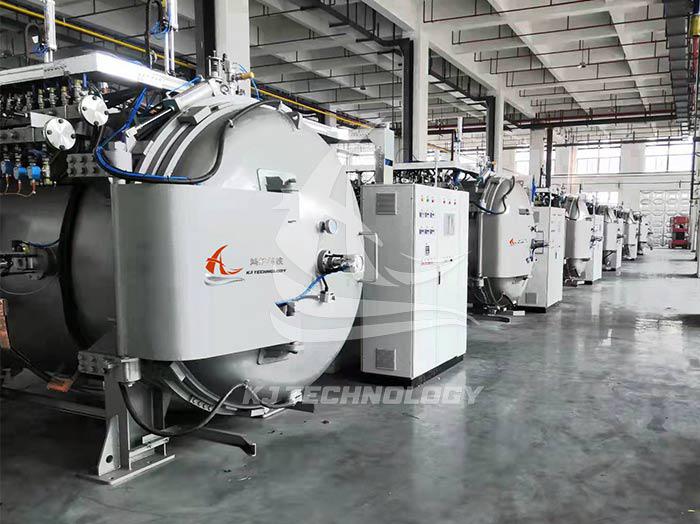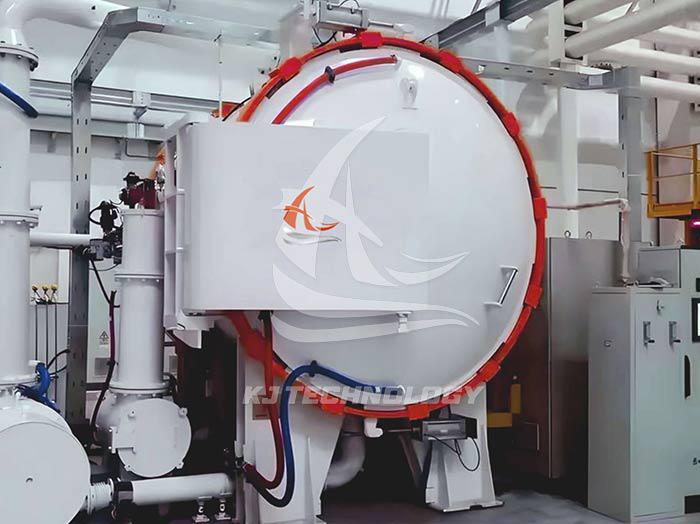Daily maintenance of electric heating vacuum annealing furnace
 04-17-2025 Author: KJ technology
04-17-2025 Author: KJ technology
The daily maintenance of electric heating vacuum annealing furnaces is crucial for ensuring the normal operation of the equipment, extending its service life, and ensuring the quality of heat treatment. The following are detailed daily maintenance contents:
1. Inspection of furnace body and sealing components
Furnace appearance:
Check the appearance of the furnace body daily for any damage, deformation, or corrosion.
Clean the dust and debris on the surface of the furnace to keep it clean.
Sealing element:
Regularly inspect the sealing components of furnace doors, observation windows, vacuum pipelines, and other parts for integrity, aging, damage, or deformation.
If damaged seals are found, they should be replaced in a timely manner to ensure the vacuum level inside the furnace.
2. Vacuum system maintenance
Vacuum pump:
Regularly check the oil level and quality of the vacuum pump to ensure that the oil level is within the normal range and the oil quality is clean and free of impurities.
Regularly replace the vacuum pump oil and clean the oil and impurities inside the vacuum pump.
Check the operation sound and vibration of the vacuum pump, and if there are any abnormalities, stop the machine for inspection in a timely manner.
Vacuum pipelines and valves:
Check if there is any air leakage in the vacuum pipeline, and repair it promptly if there is any.
Regularly check whether the vacuum valve is flexible in opening and closing, and whether the sealing is good.
3. Heating system inspection
Heating element:
Regularly inspect the appearance of heating elements (such as resistance wires, silicon carbide rods, etc.) for any signs of breakage, deformation, or aging.
Use professional instruments to detect the resistance value of the heating element and ensure that it is within the normal range.
If the heating element is found to be damaged, it should be replaced in a timely manner.
Temperature control system:
Regularly check whether the temperature control instrument displays accurately and whether the control is sensitive.
Calibrate temperature control instruments to ensure their measurement and control accuracy.
Check if the wiring of the temperature control system is loose or aged, and if so, tighten or replace it in a timely manner.
4. Cooling system maintenance
Cooling water:
Regularly check the flow and quality of cooling water to ensure that it is sufficient and clean.
Clean the impurities and dirt in the cooling water pipeline to prevent blockage.
Cooling equipment:
Check the operation of cooling equipment (such as cooling towers, water pumps, etc.), and repair or replace them promptly if there are any abnormalities.
5. Safety device inspection
Safety valve:
Regularly check the working status of the safety valve to ensure that it can automatically open and release pressure in case of overpressure.
Alarm device:
Test the sensitivity of alarm devices (such as over temperature alarm, vacuum alarm, etc.) to ensure that they can issue alarms in a timely manner under abnormal conditions.
6. Operating standards and records
Operating standards:
Strictly follow the operating procedures to avoid equipment damage or safety accidents caused by unauthorized operations.
Maintenance records:
Establish equipment maintenance record files, recording information such as the time, content, and replaced parts of each maintenance.
Analyze the operation status of equipment through maintenance records, promptly identify potential problems, and take measures to solve them.








